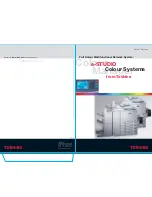
WiseScript Package Editor Reference
121
WiseScript Actions
To complete the dialog box
z
Log Text
Enter the text to be added to the log file. You can enter variables surrounded by %.
To see the format of lines, open existing log files.
Examples
By default, uninstall does not remove files that were installed to Windows,
Windows\System, or Windows\System32. To remove these files, place an Add Text to
Install.log script line directly before the Install File(s) script lines that install files to one
of these directories. Type the following as the Log Text (exactly as shown because it is
case-sensitive):
Non-System File:
You can add a line to the Install.log that pauses the uninstall, executes an application
until it finishes, then resumes the uninstall. To do this, type the following as Log Text,
substituting your own path to the .EXE (case-sensitive):
Execute path: %MAINDIR%\Remove.exe
If you want the uninstall to remove not only files that were installed, but also files that
were added later, you can remove all the files and sub-directories within a specified
directory. Use this option with caution because end users might have stored their own
files in the directory. You can use Windows standard wildcard notation (example: *.* for
all files). Type the following as Log Text, substituting your own directory path (case-
sensitive):
File Tree: %MAINDIR%\Data\Temp\*.*
If you want the uninstall to remove not only the registry keys that were installed, but
also keys that were added later, you can remove an entire registry key, including all its
sub-keys and values. Type the following as Log Text, substituting your own registry
tree (case-sensitive):
RegDB TREE: SOFTWARE\Wise
RegDB Root: 2
where RegDB Root is one of the following:
0 - HKEY_CLASSES_ROOT
1 - HKEY_CURRENT_USER
2 - HKEY_LOCAL_MACHINE
3 - HKEY_USERS
Note
In WiseScript Package Editor, you also can specify uninstall actions on the Uninstall
page.
Add to AUTOEXEC.BAT
This action edits Autoexec.bat, which is executed during startup, allowing you to add
commands that are executed before Windows loads.
Insert commands at a particular line number, or search the file for specific text and
insert the new line before, after, or in place of the existing line. The destination
computer is restarted after installation to force the new commands to take effect.
















































